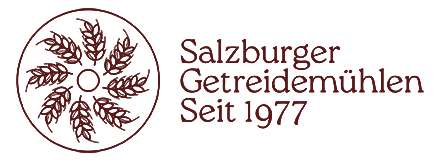
Have you ever wondered what the difference is between bran, husk and ear? What parts of the grain are we actually talking about here?
Now let’s go from the big to the small and start with the ear. This is an inflorescence type in which the individual flowers of a plant are located on an elongated main axis. If you imagine a rye, for example, the appearance is exactly that of an ear or spikelet. This is because in cereals, the individual flowers do not sit directly on the main axis. What is meant by spikelet is when the flowers are arranged behind bracts on the main axis. These cover sheets are called teguments, which already leads us to the next clarification of terms.
Thus, the glumes are the bracts of the flowers. In cereals, several glumes are present in the spikelet, such as the glume, the glume or the bracts. They serve to protect the flower. When threshing in the field, the husks are removed from the grain if it is to be further processed into grain products.
For the sake of completeness, it must be said that not every cereal variety has a spike-like arrangement. For example, in the case of oats and rice, the flowers can be seen in the form of panicles.
Now let’s move on to the bran. Since these are also largely external parts of the grain, they should not be confused with the husk. When cereals are processed into white flour, the residues that remain form the bran: seed and fruit coatings, the aleurone layer, and the germ. All these components of the cereal are particularly rich in nutrients and fiber. However, since far too many white flour products are produced nowadays, these so valuable grain fractions do not end up on people’s plates, but serve as animal feed.
When the grain is processed into wholemeal flour, the bran is also milled. This is why it is so rich in nutrients and fiber and can bring beneficial health effects. With a
Salzburg flour mill
is an easy way to grind whole grains. The result: fresh, nutrient- and fiber-rich whole grain flour.
And if you still want to know how a grain is structured, we have a HERE a contribution for you!
Sources
https://www.lebensmittellexikon.de/k0001200.php
Münzing-Ruef, I. (2000): Course book healthy eating. The kitchen as nature’s pharmacy. Munich: Wilhelm Heyne Verlag
https://de.wikipedia.org/wiki/Spelze
Address:
Gasteigweg 25,
5400 Hallein
Austria
Opening hours:
Monday to Thursday: 09 – 16:00
Friday: 09 – 12:00
Contact:
Phone: +43 6245 83282
E-mail: info@agrisan.at
Address:
Gasteigweg 25,
5400 Hallein
Austria
Opening hours:
Monday to Thursday: 09 – 16:00
Friday: 09 – 12:00
Contact:
Phone: +43 6245 83282
E-mail: info@agrisan.at

